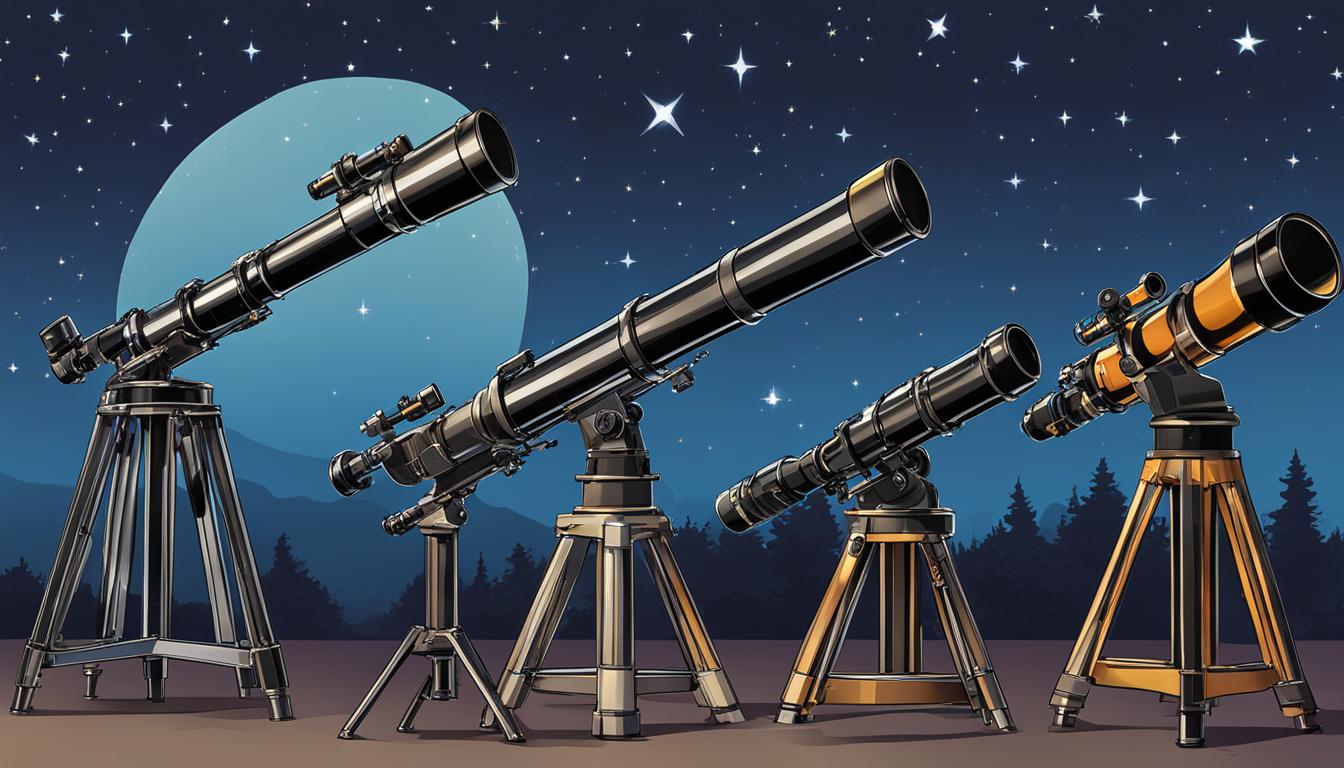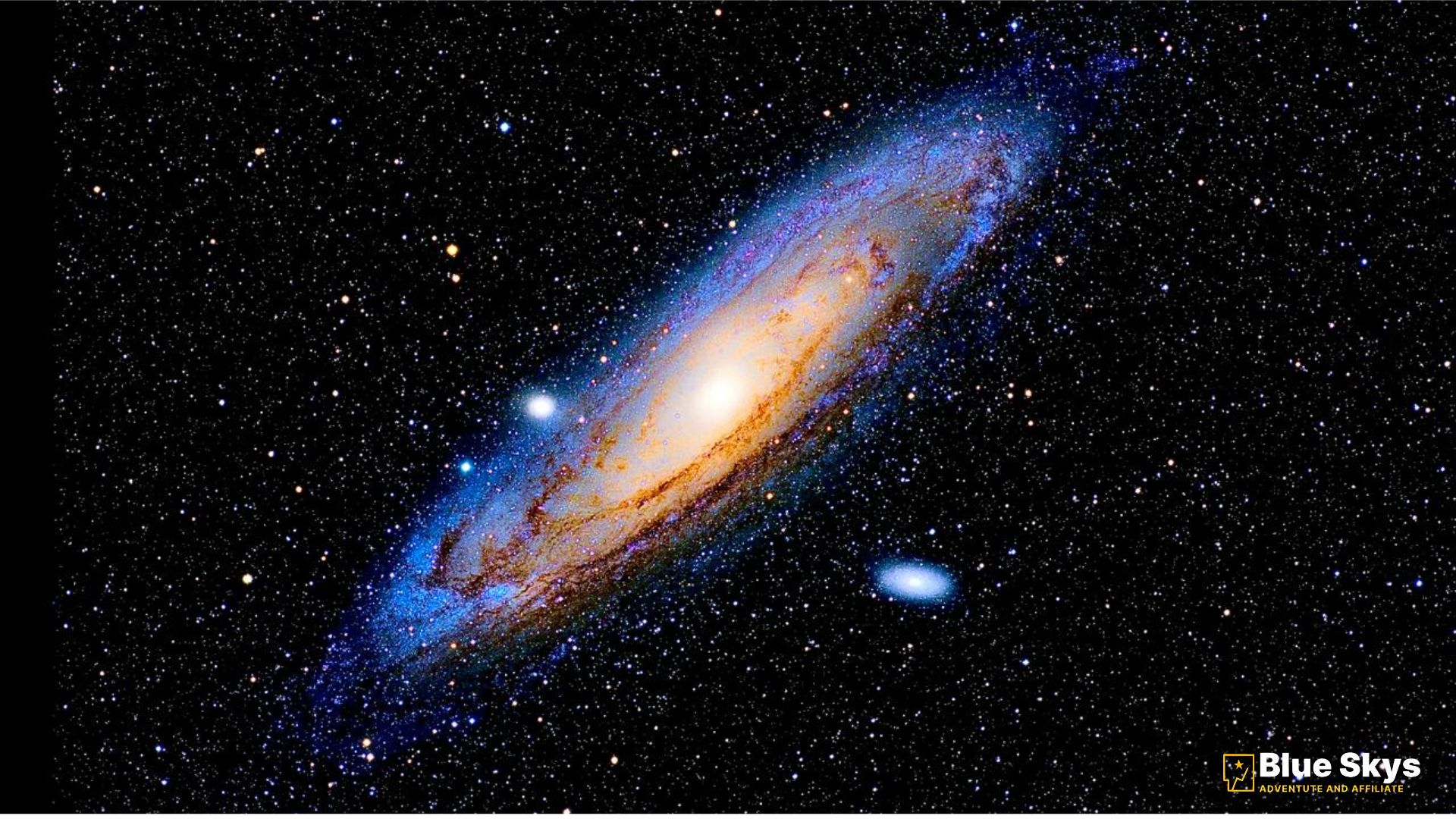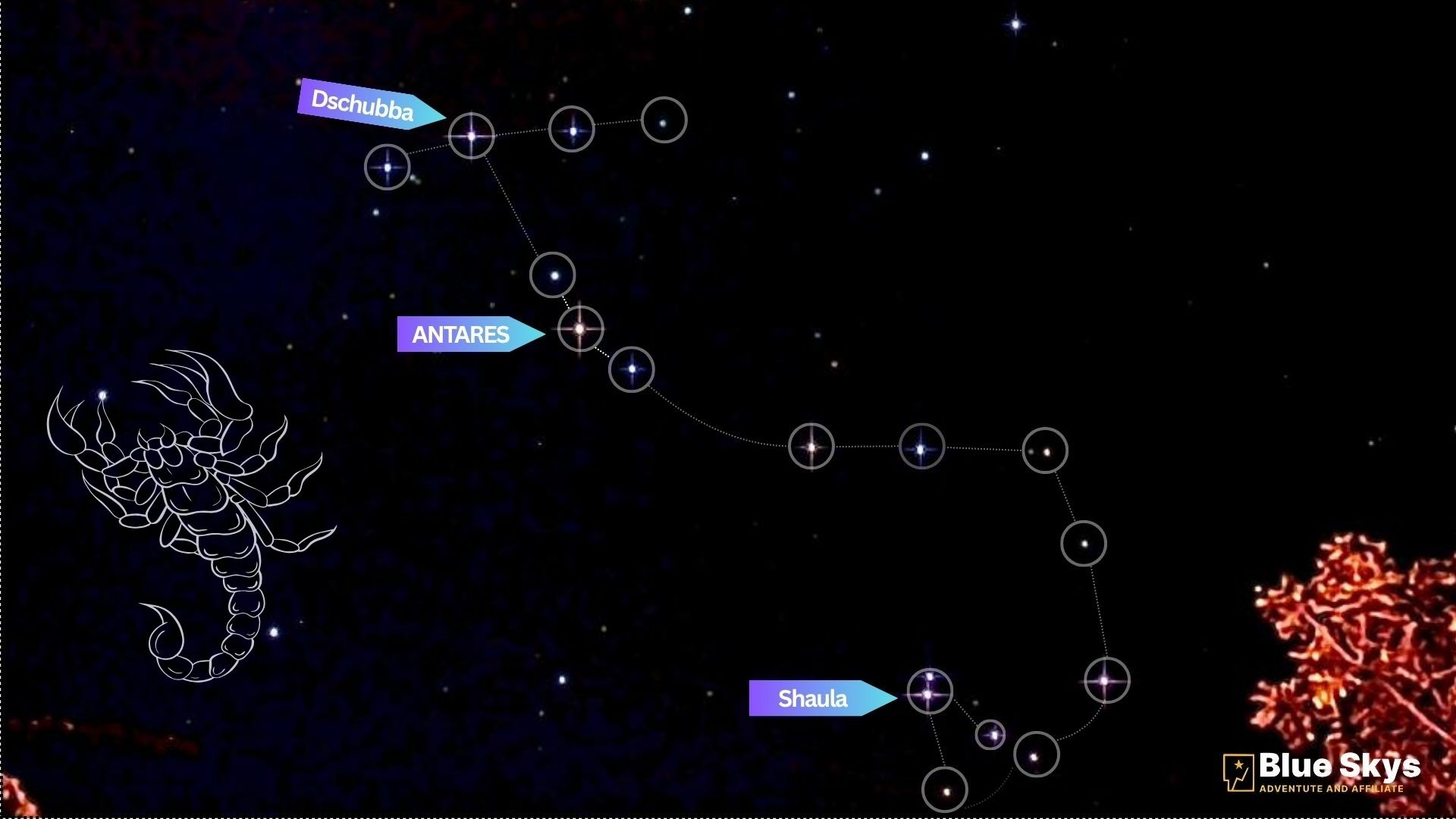Walking into an astronomy store or browsing online for a first telescope can feel overwhelming. You’ll see dozens of models with confusing names and technical jargon like “aperture” and “focal length.” Most guides, unfortunately, throw a lot of details at you and leave you more confused than when you started.
The Good News for Beginners
As a matter of fact, you don’t need a super-powerful, expensive telescope to start. As someone who has spent decades under the night sky, I’ve seen countless beginners make the same mistakes. The truth is, you just need a solid, reliable tool that will help you see the cosmos for the first time without the headache. Therefore, this guide will cut through the noise and give you just what you need: three types of telescopes you should actually consider. If you want the no-fluff, straight-to-the-point answer, this guide is for you. In this way, we’ll get you looking at the Moon and planets in no time.
Telescope Type #1: The Light Collector (Reflector Telescope)
This is the classic “big tube” telescope. It uses a mirror at the bottom of the tube to collect light and create an image. Why It’s Great for Beginners: For the price, it gathers the most light, which is crucial for seeing faint, distant objects like galaxies and nebulae. In addition, its simple design means there’s less to go wrong. The Catch: However, the open tube can get dusty, and as a result, it can be a bit bulkier and more cumbersome than other types. What You’ll See: With this, you will see the rings of Saturn, the moons and cloud bands of Jupiter, bright star clusters like the Pleiades, and even the faint glow of the Andromeda Galaxy.

Telescope Type #2: The Planet Watcher (Refractor Telescope)
This is the long, skinny telescope, like the ones you see in old movies. It uses a lens at the front to collect light. Why It’s Great for Beginners: This telescope is extremely durable and requires almost no maintenance. Furthermore, it provides very crisp, sharp, high-contrast views of the Moon and planets, and it’s generally lightweight and easy to transport. The Catch: On the other hand, it’s more expensive per inch of light-gathering power, so it’s not the best choice for seeing very faint, deep-sky objects. What You’ll See: For example, you will see breathtaking, up-close views of the Moon’s craters, the cloud bands on Jupiter, and the phases of Venus.
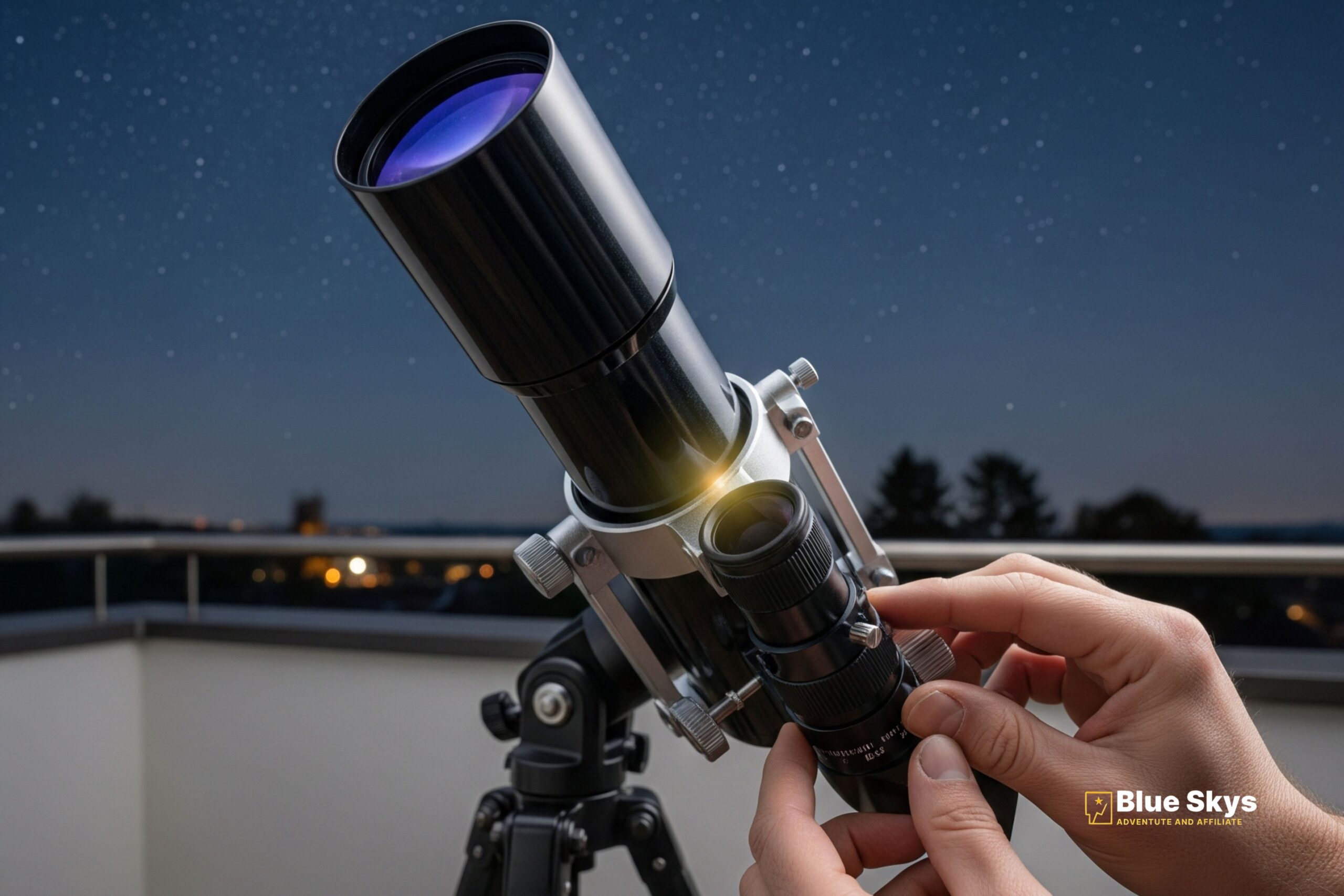
Telescope Type #3: The All-Arounder (Compound Telescope)
This is the short, fat, and more modern-looking telescope. It uses a combination of mirrors and a lens to “fold” the light path inside, making the telescope very compact. Why It’s Great for Beginners: It’s highly portable and easy to set up. Moreover, it’s an excellent choice for viewing both planets and deep-sky objects. Many models, in fact, come with a “GoTo” mount, a computer that automatically finds objects for you with the press of a button. The Catch: Nevertheless, it’s more expensive than the other two types, and its more complex design means more can go wrong. What You’ll See: As a result, you get a versatile view of everything from the planets and their moons to the brighter nebulae and star clusters, all from a compact setup.
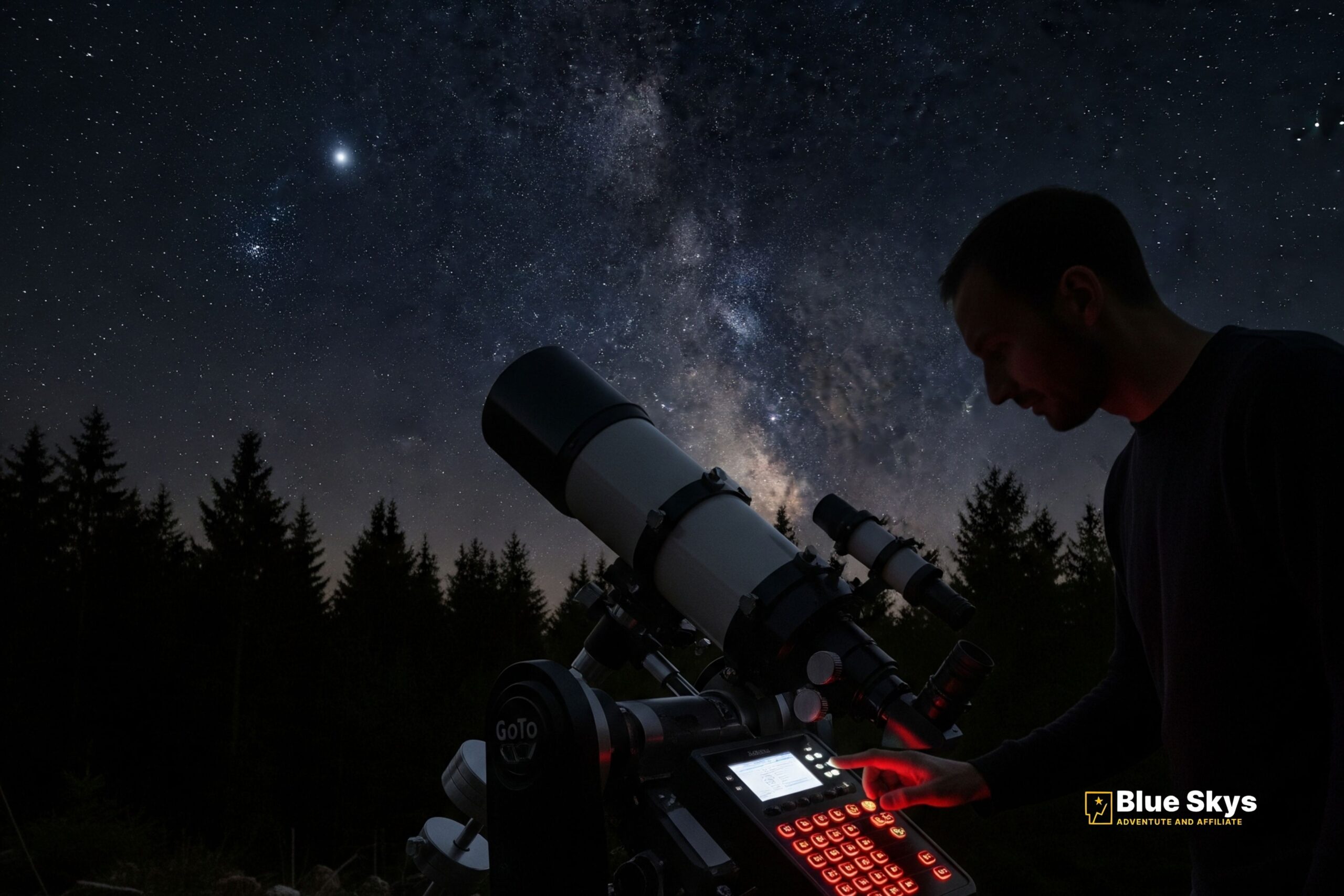
What You’ll See: A versatile view of everything from the planets and their moons to the brighter nebulae and star clusters, all from a compact setup.
| Telescope Type | Best For… | Key Advantage | Key Disadvantage |
|---|---|---|---|
| Reflector (The Light Collector) |
Faint, distant objects (galaxies, nebulae) |
Best value for money for light-gathering power |
Can be bulky & needs occasional maintenance |
| Refractor (The Planet Watcher) |
Planets & the Moon (high-contrast views) |
Extremely durable and low maintenance |
More expensive for the same light-gathering power |
| Compound (The All-Arounder) |
Portability & versatility (planets and deep-sky) |
Very compact and portable; often includes auto-finding tech |
The most expensive type |
Final Word: The Best Telescope Is the One You Will Use
Choosing a telescope isn’t about finding the most powerful one on the market. It’s about finding the right tool to start your journey. Each of these three types offers a fantastic entry point into the hobby, depending on what you want to focus on and your budget.
Ready to dig into the details? For an in-depth breakdown of optics, specs, and a wider range of models, check out our The Definitive 2025 Telescope Buyer’s Guide: A Deep Dive into Optics, Mounts, and More.
